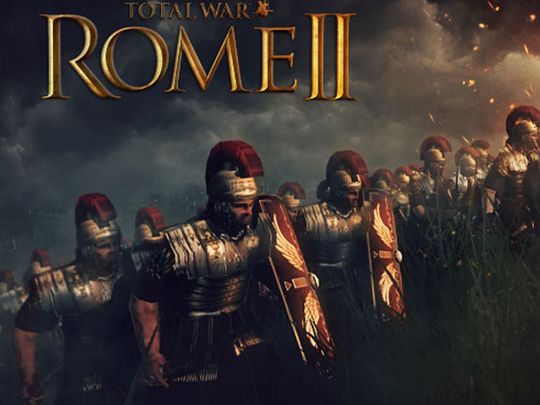
I’m a fan of the Total War games. The blend of national strategy and real-time battlefield tactics is intensely appealing to any armchair general and I’ve played most of them over the last 13 years.
And Rome has always been the killer era. Who doesn’t want a chance to test their skills against the likes of Caesar, Marius and Pompey, Hannibal or Scipio? The era has disciplined legions, wild barbarians, wily Phoenicians and the chance to build Europe’s first superpower. The first Rome game just blew me away.
So, I’m naturally predisposed to love Rome II. But I don’t. I like it, but I don’t love it. It’s just too messy — 300 years of Roman history, with the whole of Europe and the Middle East as a campaign area, 117 factions (eight playable with the base game, more added in downloadable content). I’m all in favour of epic games, but Rome II sprawls far too much to be a tight game.
The problems begin with installation. In order to install the game, you need a Steam account (I have one) and an internet connection (check), plus the disks. Now, a straight Steam download may go smoothly, but it took me several attempts and a reboot to get the game properly installed.
And as soon as it was installed, it demanded a 9Gb update through Steam before I could play.
That’s pretty annoying if you buy the physical version. We buy disks so we don’t have to download overnight. But, it seems, the release version of Rome 2 was giving some machines issues, and so we all have to download the massive update.
Once in, things improve. Graphics aren’t going to win any awards — the hardware requirements are not demanding — but graphics are not the purpose of strategy games. As with previous Total War games, tutorials focus initially on battlefield command, and we leap straight into a bit of early Roman history, during the Samnite Wars, when Rome hadn’t yet conquered Italy. As in previous games, you’re given an adviser who tells you not only how to move your troops but where to move them and what to do with them when you get there.
Once you’re through the tutorials, you can begin your own campaign, starting around 270BC and playing into the middle of the 1st century AD (or further, since there’s no formal end to the game). Faction choices are Rome, Carthage, Macedon, the Iceni (Britain), the Arveni (Gaul), the Suebi (Germany), Parthia and Egypt.
The campaign map is, it must be said, rather beautiful, and exaggerated, poetic and three-dimensional recreation of ancient Europe and the Middle East, from Portugal to Afghanistan. But gamewise, it’s slow. Computer factions seem to take an age to take their turns. And if you begin with a faction away from the Mediterranean, there isn’t an awful lot to do in the early phases.
Stick with Rome, and the interest levels are much greater.
In battlefield mode, the game introduces a variety of new troop types. Sound effects and visuals are pretty good, considering the sheer number of units involved. But mouse control is so delicate it can be tough to move your point of view to where you want it; this was not an issue in earlier Total War games. Even reducing the sensitivity and resolution of my gaming mouse didn’t help.
But despite the problems, Rome II is about as close as you’ll get to experiencing this beautiful, intense and wide-reaching eras of history. In some ways, it’s more of an experience than a game, and it can be fun to move your point of view from the standard bird’s-eye overview to put yourself in the thick of the action, watching how individual soldiers act.
Despite the frustrations, Rome II still engages the imagination.








